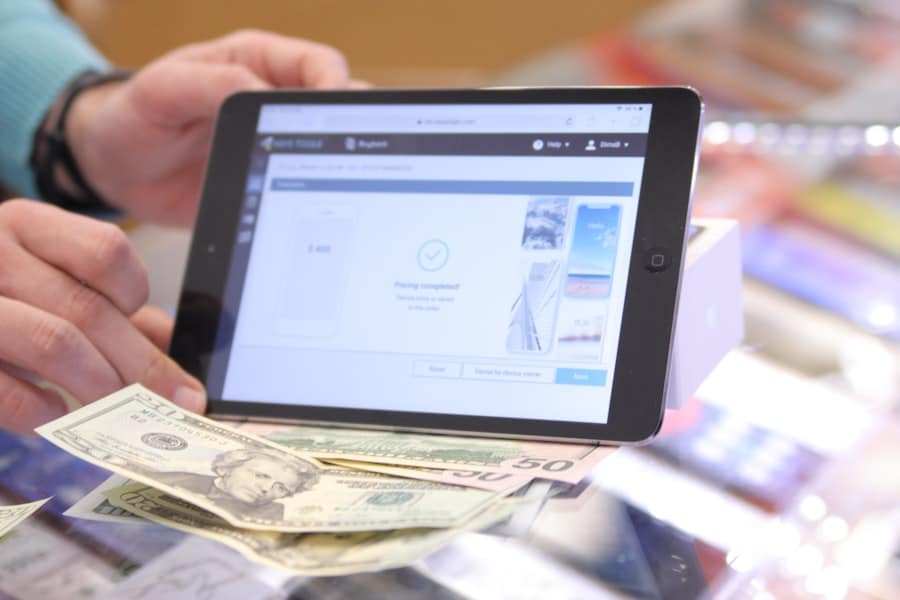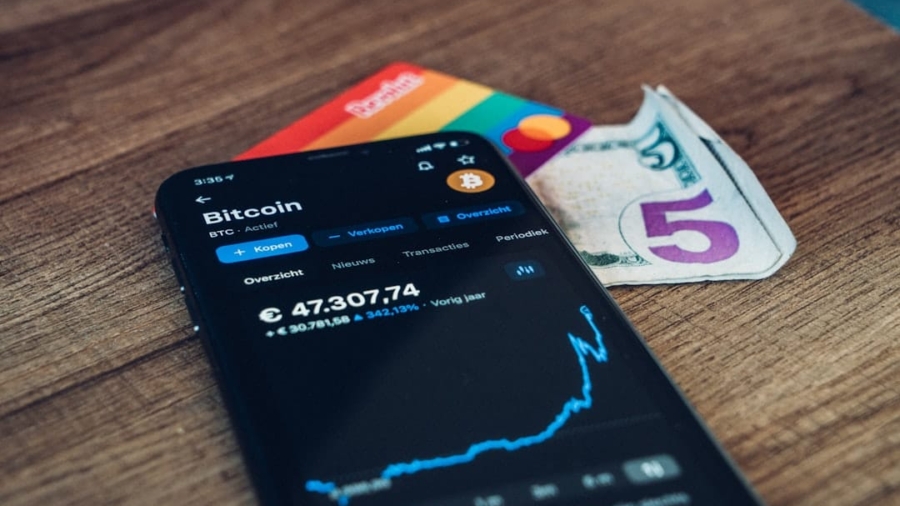In recent years, the financial landscape has undergone a significant transformation, largely driven by the advent of digital lending apps. These platforms have revolutionized the way individuals and businesses access credit, providing a seamless alternative to traditional banking methods. Digital lending apps leverage technology to streamline the borrowing process, making it more efficient and user-friendly.
They cater to a diverse range of borrowers, from those seeking personal loans to small businesses in need of working capital. The rise of these applications is not merely a trend; it reflects a fundamental shift in consumer behavior and expectations regarding financial services.
With millions of users now accustomed to managing their finances online, these platforms have capitalized on the demand for quick and easy access to funds. The convenience of applying for a loan from the comfort of one’s home, coupled with the ability to receive funds almost instantaneously, has made digital lending an attractive option for many. As we delve deeper into the various advantages these apps offer, it becomes clear that they are reshaping the borrowing experience in profound ways.
Key Takeaways
- Digital lending apps provide easy access to loans through mobile devices, making the process convenient for users.
- These apps offer quick and efficient loan processing, reducing the time it takes for borrowers to receive funds.
- Lower interest rates and fees are often offered by digital lending apps compared to traditional financial institutions.
- Users have the flexibility to choose from a variety of loan options that suit their specific needs and financial situations.
- The use of technology for risk assessment allows digital lending apps to provide improved customer experiences and personalized loan offers.
Convenience and Accessibility
One of the most compelling features of digital lending apps is their unparalleled convenience. Traditional lending processes often involve lengthy paperwork, in-person meetings, and extensive waiting periods. In contrast, digital lending platforms allow users to apply for loans with just a few taps on their smartphones.
This ease of access is particularly beneficial for individuals who may not have the time or resources to navigate the complexities of conventional banking. Users can complete their applications at any time and from virtually anywhere, eliminating the need for physical visits to banks or credit unions. Moreover, digital lending apps have democratized access to credit, reaching underserved populations that may have been overlooked by traditional financial institutions.
Many of these platforms employ alternative data sources to assess creditworthiness, enabling them to extend loans to individuals with limited credit histories or lower credit scores. This inclusivity is crucial in promoting financial empowerment and helping individuals build their credit profiles over time. As a result, digital lending apps are not only convenient but also play a vital role in fostering financial inclusion.
Speed and Efficiency

The speed at which digital lending apps operate is another significant advantage that sets them apart from traditional lenders. In many cases, borrowers can receive approval for their loans within minutes, with funds disbursed shortly thereafter. This rapid turnaround time is particularly advantageous for those facing urgent financial needs, such as medical emergencies or unexpected expenses.
The efficiency of these platforms is largely attributed to their automated processes, which minimize human intervention and reduce the potential for delays. For instance, many digital lending apps utilize algorithms to evaluate loan applications quickly. By analyzing various data points—such as income, employment history, and spending patterns—these algorithms can make informed decisions about creditworthiness in real-time.
This not only expedites the approval process but also enhances accuracy in risk assessment. Borrowers no longer have to endure the anxiety of waiting days or weeks for a loan decision; instead, they can focus on addressing their immediate financial concerns with confidence.
Lower Interest Rates and Fees
Another appealing aspect of digital lending apps is their potential for lower interest rates and fees compared to traditional lenders. Many of these platforms operate with lower overhead costs due to their online-only business models. Without the need for physical branches and extensive staff, they can pass on these savings to borrowers in the form of more competitive rates.
This is particularly beneficial for individuals who may be seeking smaller loans or those with less-than-perfect credit histories. Additionally, digital lending apps often provide transparent fee structures, allowing borrowers to understand exactly what they will owe before committing to a loan. This transparency contrasts sharply with some traditional lenders, where hidden fees can lead to unexpected costs down the line.
By offering clear terms and conditions, digital lending platforms empower borrowers to make informed decisions about their financial commitments. As competition in the digital lending space continues to grow, it is likely that rates will remain favorable for consumers seeking affordable borrowing options.
Flexibility in Loan Options
Digital lending apps also excel in offering a diverse array of loan options tailored to meet the unique needs of borrowers. Whether an individual requires a personal loan for debt consolidation, a small business seeks funding for expansion, or someone needs a short-term cash advance, these platforms provide various products designed to accommodate different financial situations. This flexibility allows borrowers to select loans that align with their specific requirements and repayment capabilities.
Furthermore, many digital lending apps offer customizable repayment terms, enabling borrowers to choose loan durations that suit their financial circumstances. For example, someone who anticipates a quick return on investment may prefer a shorter repayment period with higher monthly payments, while another borrower might opt for a longer term with lower monthly installments. This level of customization enhances borrower satisfaction and fosters a sense of control over one’s financial journey.
Improved Customer Experience

The user experience provided by digital lending apps is often superior to that of traditional lenders. These platforms prioritize customer satisfaction by offering intuitive interfaces and streamlined application processes. Many apps feature user-friendly designs that guide borrowers through each step of the loan application process, minimizing confusion and frustration.
Additionally, customer support is typically readily available through various channels, including chatbots, email, and phone support. Moreover, digital lending apps frequently incorporate feedback mechanisms that allow users to share their experiences and suggest improvements. This responsiveness to customer input fosters a sense of community and trust between borrowers and lenders.
As these platforms continue to evolve, they are increasingly focused on enhancing user experience through innovative features such as personalized loan recommendations based on individual financial profiles or gamified elements that encourage responsible borrowing behavior.
Use of Technology for Risk Assessment
The integration of advanced technology into risk assessment processes is a hallmark of digital lending apps. Traditional lenders often rely heavily on credit scores as the primary determinant of creditworthiness; however, this approach can overlook valuable insights from alternative data sources. Digital lending platforms utilize machine learning algorithms and big data analytics to evaluate potential borrowers more comprehensively.
For instance, some apps analyze social media activity, transaction history from bank accounts, and even utility payment records to gauge an applicant’s reliability and financial behavior. By considering a broader range of factors, these platforms can make more accurate assessments of risk while also identifying borrowers who may be unjustly excluded from traditional lending avenues due to limited credit histories. This innovative approach not only enhances the accuracy of lending decisions but also contributes to a more inclusive financial ecosystem.
Global Expansion and Market Trends
The global expansion of digital lending apps reflects broader trends in fintech innovation and consumer behavior. As internet penetration increases worldwide and mobile technology becomes more accessible, markets in developing regions are witnessing a surge in digital lending activity. Countries in Asia, Africa, and Latin America are experiencing rapid growth in fintech solutions that cater to local needs while addressing gaps left by traditional banking systems.
In addition to geographical expansion, there is also a growing trend toward collaboration between fintech companies and established financial institutions. Many banks are recognizing the value of partnering with digital lenders to enhance their service offerings and reach new customer segments. This collaboration can take various forms, including co-branded products or technology-sharing agreements that enable banks to leverage fintech innovations while maintaining their regulatory compliance.
As digital lending continues to evolve, it is poised to play an increasingly significant role in shaping the future of finance globally. The ongoing advancements in technology will likely lead to even more sophisticated lending solutions that prioritize consumer needs while promoting responsible borrowing practices across diverse markets.
Digital lending apps are becoming increasingly popular worldwide due to their convenience, speed, and accessibility. These platforms offer a seamless borrowing experience, often requiring just a smartphone and an internet connection to access funds. As technology continues to evolve, the demand for efficient and user-friendly digital solutions is on the rise.
For instance, choosing the right tools can significantly enhance productivity and user experience. An article that explores this idea is The Best Laptop for Copywriters: Finding Your Perfect Writing Companion, which discusses how selecting the right laptop can improve efficiency and creativity, much like how digital lending apps streamline financial transactions.
FAQs
What are digital lending apps?
Digital lending apps are mobile applications that provide users with the ability to borrow money, apply for loans, and manage their finances entirely through their smartphones or other digital devices.
Why are digital lending apps gaining popularity globally?
Digital lending apps are gaining popularity globally due to their convenience, accessibility, and ease of use. These apps offer quick and hassle-free loan application processes, often with minimal documentation requirements, making them attractive to users in need of fast financial assistance.
How do digital lending apps work?
Digital lending apps typically use algorithms and data analytics to assess a user’s creditworthiness and determine their eligibility for a loan. Once approved, the loan amount is disbursed directly to the user’s bank account, and repayment is usually facilitated through the app itself.
What are the benefits of using digital lending apps?
Some benefits of using digital lending apps include quick loan approval and disbursement, minimal paperwork, 24/7 accessibility, and the ability to track and manage loan repayments through the app. Additionally, these apps often cater to individuals who may have difficulty accessing traditional banking services.
Are there any risks associated with using digital lending apps?
While digital lending apps offer convenience, there are potential risks such as high-interest rates, hidden fees, and the possibility of falling into a debt trap if not managed responsibly. It’s important for users to carefully review the terms and conditions of any loan before applying through a digital lending app.

